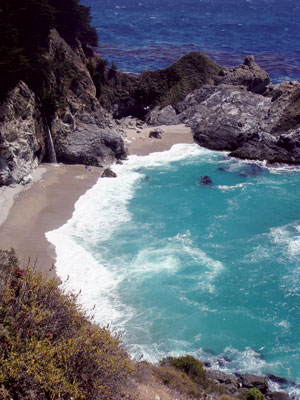All Nonfiction
- Bullying
- Books
- Academic
- Author Interviews
- Celebrity interviews
- College Articles
- College Essays
- Educator of the Year
- Heroes
- Interviews
- Memoir
- Personal Experience
- Sports
- Travel & Culture
All Opinions
- Bullying
- Current Events / Politics
- Discrimination
- Drugs / Alcohol / Smoking
- Entertainment / Celebrities
- Environment
- Love / Relationships
- Movies / Music / TV
- Pop Culture / Trends
- School / College
- Social Issues / Civics
- Spirituality / Religion
- Sports / Hobbies
All Hot Topics
- Bullying
- Community Service
- Environment
- Health
- Letters to the Editor
- Pride & Prejudice
- What Matters
- Back
Summer Guide
- Program Links
- Program Reviews
- Back
College Guide
- College Links
- College Reviews
- College Essays
- College Articles
- Back
Controversy on Biodiversity
“Scientists and conservationists agree that introduced plants and animals represent the single greatest threat to the terrestrial ecosystem of the Galapagos Islands” ("Latest News"). In most cases the occupancy of humans and the introduction of invasive species in areas have shown a negative effect on ecosystems; however, there is a possibility that humans harmed the overall biodiversity from not colonizing the Galapagos islands at a sooner point in time.
The Galapagos Islands are known for having a wide variety of fish, insects, mammals, reptiles, amphibians, and birds. Statistics show that 95% of the Island’s species are still present today (“Latest News”). Most people know about that birds that live there because of Charles Darwin. Charles Darwin discovered the Galapagos Islands in 1535. (“The Galápagos”). He took a trip to the Galapagos Islands and learned that all species are descendants from other species that once lived before them. (“Charles Darwin”). The following are a list of some native species to the Galapagos islands: giant tortoises, blue footed boobies, galapagos penguins, skipjack tuna, sea lions, and many more other species (“Galapagos Animals Gallery”) (“Latest News”). All of the animals listed are still intact today and the government of the Galapagos Islands makes it a priority to protect the organisms from going extinct.
Even though the government tries to keep the Galapagos ecosystem as authentic as possible, the still some invasive species that find a way in. “The number of introduced species in the Galapagos Islands continues to increase; with many of them impacting the native ecosystems” (“Latest News”). Many species of animals -- 750 to be exact -- have been introduced with about 90% used for farming and agriculture (“Latest News”). Many of these animals are ones that most of us know: goats, dogs, cats, rats, donkeys, and a few more (“Latest News”). These were brought here by people when they started to make these tropical islands their home. Insects have also become a problem. Many of them are brought here on cruise ships when they come to import goods that the Galapagos Islands cannot make themselves (“Latest News”). The government has stepped in and has been trying to put efforts into stopping invasive species as much as possible. In the 1990’s the Galapagos Islands government made it a law to inspect cargo ships of non-native species that go to the Galapagos Islands so that the ecosystem can stay intact (“Latest News”). Project Isabella in 2006 eliminated goats, donkeys, and pigs from Santiago, and pigs from Pinta (“Latest News”). If we keep away the more domestic animals and bring in the exotic ones, there is a possibility that we will be able to actually help the biodiversity of the Galapagos Islands.
Many people think that it is important to keep invasive species out of the Galapagos Islands, but it is possible they are wrong.The Amazon has been a home to people for many years, and it is the most biodiverse place in the world! When people live in a new place, they usually bring things with them: seeds, plants, and pets are just a few. They use the seeds and the flora to plant, and the pets or livestock are usually used for meat. They will need more livestock to have enough food since humans will probably start having children. Humans will need more and more resources, so they will start planting bigger spaces of these plants, and they will reproduce more livestock. Darwinism is a theory of evolution that was developed by C. Darwin that stated that all species of organisms develop through natural selection. This theory may supports that humans inhabiting a place which can increase the amount of animals so much more because of evolution. Many may disagree with this hypothesis; however, there are facts that say it is a risk that we should be willing to take.
Although the Galapagos Islands are thought to be diverse by many, it has been proven by other ecosystems that human colonization can actually benefit the overall biodiversity of many areas . That being said, the species found on the Galapagos Islands, and how Charles Darwin thought they evolved to fit the Galapagos’ rare ecosystem, will continue to amaze and draw people to them.

Similar Articles
JOIN THE DISCUSSION
This article has 0 comments.